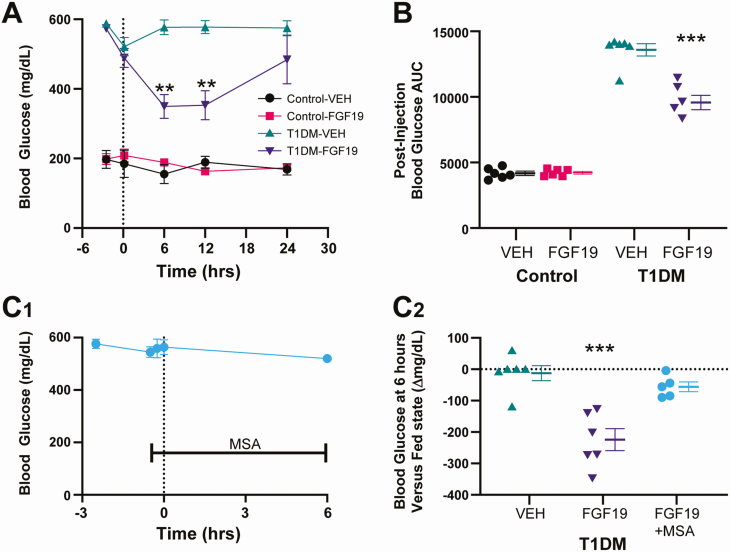Figure 1.
Hindbrain application of FGF19 decreases blood glucose concentration in diabetic mice through a parasympathetic mechanism. (A) Blood glucose concentration measured 2 h before injection (before fasting), and at 10 min and 6, 12, and 24 h after 4V microinjection of VEH (1 µL PBS) or FGF19 (3 µg in VEH) in normoglycemic (control) and hyperglycemic mice with T1DM. Asterisk indicates significance vs VEH for T1DM mice (**P < 0.01; n = 24; repeated measures 2-way analysis of variance with Tukey’s multiple comparison test). (B) Postinjection blood glucose area under the curve values calculated for the data shown in (A). Asterisk indicates significance vs VEH (***P < 0.001; n = 24; 1-way analysis of variance). (C1) Blood glucose concentrations measured at −2.5 h (fed), −30 min(fasted), −15 min (after MSA injection), 0 min, and 6 h in relation to FGF19 injection (C2) Change in blood glucose from fed state to 6-h time point. Pretreatment with systemic MSA prevented the glucose lowering effect of FGF19. VEH and FGF19 group data were calculated from (A). Asterisk indicates significance vs VEH (***P < 0.001; n = 17; unpaired t-test).

